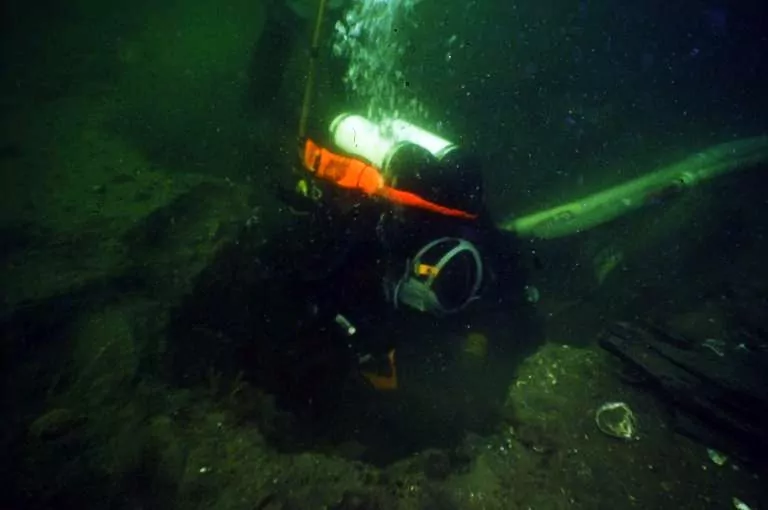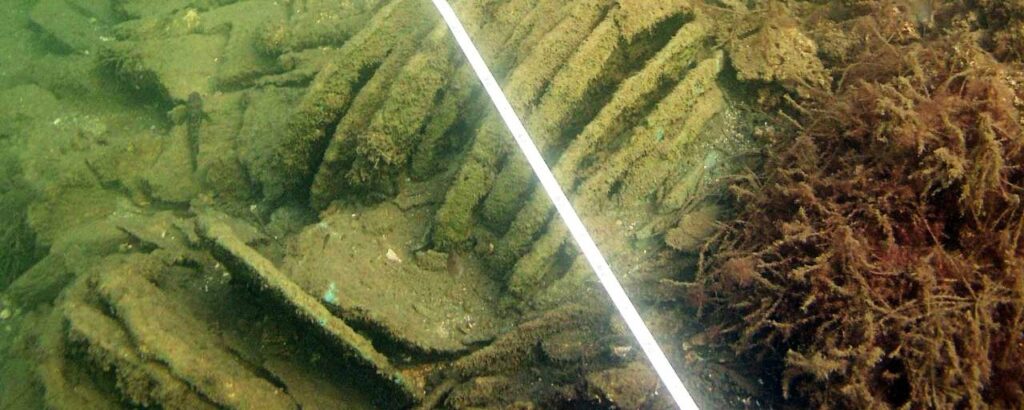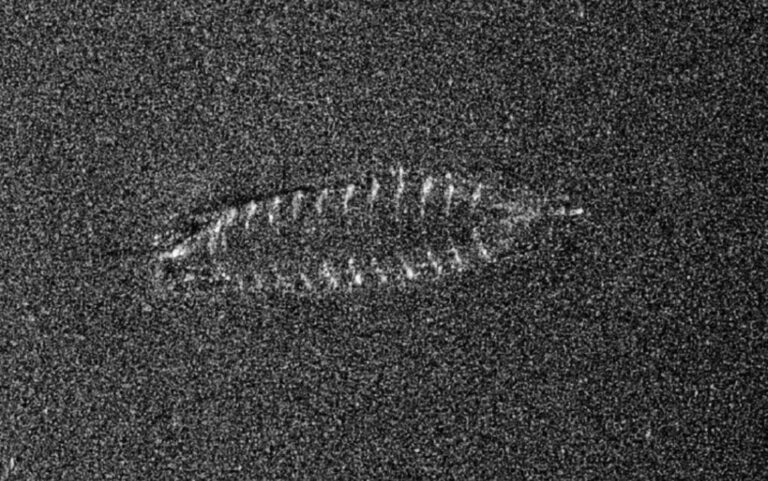A shipwreck discovered 410m deep in Norway’s biggest lake, Mjosa, is believed by marine archaeologists to be as much as 700 years old.
What could prove to be one of Norway’s oldest surviving wrecks was found by a sonar-scanning AUV searching for live ordnance dumped in the lake, which lies 100km north of Oslo.
The scans revealed the hull of a 10m-long, 2.5m-wide “clinker-built” timber ship thought to have been built from around 1300, following the transition from Viking-style ships, which had a rudder to starboard, to mediaeval designs with a distinctive bow and stern and central rudder.
Timber can remain well-preserved in the depths of a cold freshwater lake. Clinker-built vessels feature overlapping hull planks, and the loose timbers on the scan suggest that the iron nails holding them together have rusted, which would leave the structure fragile.
Marine archaeologist Oyvind Odegard from the Norwegian University of Science & Technology (NTNU) was leading a team in collaboration with the Norwegian Defence Research Establishment (FFI), using its Hugin AUV to locate and map hundreds of tonnes of surplus ammunition dumped in the lake by a factory between the 1940s and 1970s. Odegard has said that he had also been hoping to locate more archaeologically interesting artefacts.
Some 20 wrecks have previously been found in Lake Mjosa at depths in the 20-30m range, but it had never before been investigated beyond recreational scuba-diving depths. It covers more than 360sq km, although only about 40sq km have been mapped so far.
The wreck showed up only on the last day of the exercise, which will resume next year. NTNU’s research project in the lake is set to continue for the next five years.
Skafto Wreck

In Sweden, meanwhile, new techniques have enabled researchers at the University of Gothenburg to discover more about the cargo of another mediaeval, but sea-going, merchant ship known as the Skafto Wreck.
The heavily laden ship was discovered by a diver near the island of Skafto in 2003, and Bohuslans Museum divers had collected cargo samples during underwater archaeological investigations in 2009, but only now have new cargo-analysis techniques enabled the archaeologists to make a breakthrough.
“The analyses we have carried out give us a very detailed picture of the ship’s last journey and also tell us about the geographical origins of its cargo,” said maritime archaeologist Staffan von Arbin, head of the research team. “Much of this is completely new knowledge for us.”
The ship was bound for what is thought to have been Bruges in Belgium when it sank for unknown reasons in the Lysekil archipelago in the North Sea around 1440. Part of the cargo is now known to have been calcium oxide, or quicklime, from the Swedish island of Gotland, though no previous evidence of such a trade had been known to exist.

Also included were copper, mined in two areas in what is now Slovakia; roof-tiles; and oak, bricks and probably tar from Poland, leading the researchers to conclude that the ship had probably taken on this cargo for its final voyage in the port of Gdansk. Their study is published in the International Journal of Nautical Archaeology.
Also on Divernet: Atlanta Wreck Identified In Cold Lake Superior, Divers Find WW2 Bomber In Newfoundland Lake, What Goes Round: Diver Finds Historic Wheels

